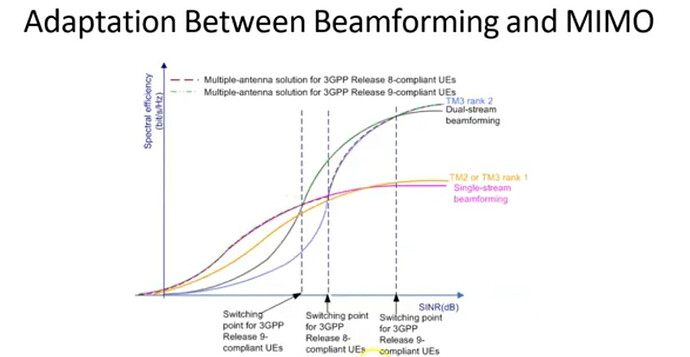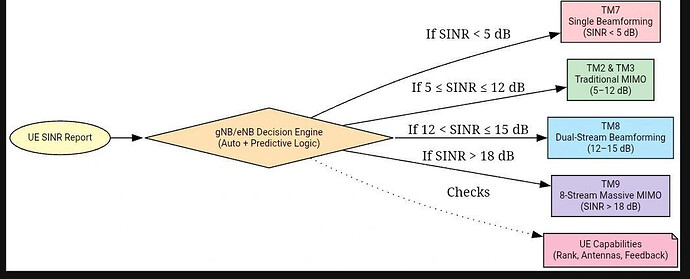In LTE and 5G, choosing the right Transmission Mode (TM) based on SINR levels and UE capabilities is key to improving spectral efficiency, coverage, and throughput.
This graph beautifully illustrates how each TM performs and when to switch between them during optimization.
Transmission Modes Explained:
-
TM7 – Single-Stream Beamforming
- Pure beamforming with a single layer
- Ideal for cell-edge users and low SINR areas
Use when SINR < 5 dB
-
TM2 & TM3 – Traditional MIMO
- TM2 (open-loop) and TM3 (closed-loop with feedback)
- Both Support Rank 1 and Rank 2, but do not involve beamforming
- Suitable for moderate SINR environments
Use when SINR is between 5–12 dB
-
TM8 – Dual-Stream Beamforming
- Closed-loop beamforming with 2 spatial streams
- Delivers both directional gain and spatial multiplexing
Use when SINR > 12–15 dB
-
TM9 – 8-Stream Beamforming (Massive MIMO)
- Uses CSI-RS feedback and supports up to 8 layers
- Delivers best performance in excellent radio conditions with capable UEs
- Commonly used in TDD Massive MIMO deployments, especially in 5G NR and LTE-Advanced Pro
Use when SINR > 18 dB
LinkedIn: ![]()

